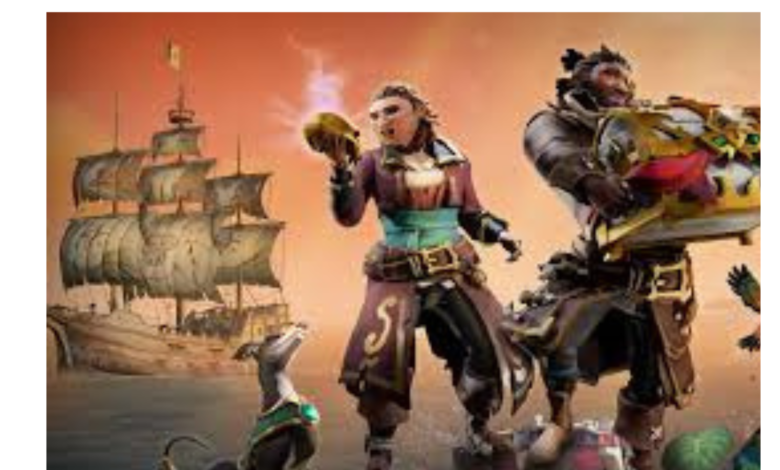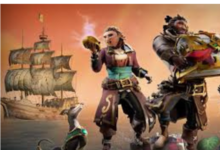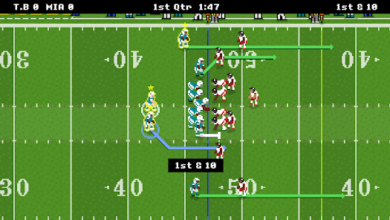Charting a Course to Safety: Safer Seas in Sea of Thieves

Introduction to Sea of Thieves
Sea of Thieves, developed by Rare Ltd., immerses players in a pirate-themed adventure across a vast open world. As players navigate the seas, safety becomes paramount amidst numerous hazards.
Game Environment and Navigation
Navigating the Sea of Thieves requires understanding its dynamic map, which spans various regions with unique challenges such as storms, rocky outcrops, and treacherous shallows.
Types of Hazards
Natural Hazards
Storms
Storms in Sea of Thieves can severely impact visibility and ship control, often leading to disastrous consequences if not navigated carefully.
Rocky Outcrops
Hidden rocks pose collision risks, damaging ships and endangering crew members who fail to navigate around them.
Artificial Hazards
Skeleton Ships
These AI-managed vessels have interaction players in fight, posing threats that require strategic maneuvering and effective use of weaponry.
Megalodons
Giant sharks, called Megalodons, assault ships unpredictably, testing crews’ readiness and defensive abilities.
Ship Types and Safety Features
Types of Ships
Sea of Thieves offers 3 deliver types: the nimble Sloop, versatile Brigantine, and formidable Galleon, every with distinct advantages and vulnerabilities affecting protection.
Safety Features
Anchors and Sails
Proper management of anchors and sails facilitates swift maneuvering, crucial for evading dangers and navigating efficiently.
Ship Repairs
Skills in ship repair are essential for addressing damage from hazards, ensuring the vessel remains seaworthy during perilous journeys.
Tools and Equipment
Essential Tools
Compass
The compass aids in navigation, helping players maintain course and accurately plot routes to avoid hazards.
Spyglass
Used for scouting distant threats and landmarks, the spyglass enhances situational awareness, crucial for preemptive hazard avoidance.
Communication and Coordination
Crew Coordination
Effective division of roles among crew members ensures seamless operation of the ship and swift responses to emergent threats.
Using the In-Game Chat
Text Chat
Text communication allows for detailed coordination and planning, particularly useful during stealth operations and avoiding PvP encounters.
Voice Chat
Real-time voice communication fosters quick decision-making and enhances crew cohesion, pivotal in fast-paced combat scenarios.
Safe Harbor and Ports
Choosing Safe Ports
Navigating to established ports provides safety from open sea hazards, allowing crews to restock supplies and plan their next voyages.
Docking and Anchoring
Mastering docking procedures prevents ship damage and ensures safe disembarkation, crucial for both emergency stops and leisurely visits.
Combat and Defense
PvP and PvE Strategies
Surviving encounters with hostile players and AI adversaries demands adept combat skills and strategic use of defensive maneuvers.
Weaponry and Defense Tools
Cannons
Cannons serve as primary offensive tools and provide essential defensive capabilities against enemy ships and sea monsters.
Firearms
Personal firearms offer crews a means of defense against boarding parties and aggressive wildlife encountered during expeditions.
Weather and Environmental Factors
Weather Conditions
Navigating wind patterns influences sailing speed and direction, impacting travel efficiency and route planning throughout the game.
Environmental Effects
Day-Night Cycle
The game’s day-night cycle affects visibility and safety, influencing strategic decisions related to navigation and combat engagements.
Tides and Currents
Understanding tidal patterns and currents aids in efficient travel planning, optimizing resource consumption and overall safety.
Navigation Tips and Tricks
Plotting Courses
Utilizing maps and navigational charts accurately guides ship routes, helping crews circumvent hazards and reach destinations efficiently.
Avoiding Hazards
Maneuvering Techniques
Mastering ship coping with techniques, along with sharp turns and evasive maneuvers, complements crews’ potential to avoid collisions with dangers.
Reaction to Sudden Dangers
Remaining vigilant and conscious of emergent threats, which includes sudden storms or competitive encounters, mitigates dangers to crew and vessel.
Risk Management and Strategy
Risk Assessment
Evaluating potential threats, from herbal disasters to adversarial encounters, permits crews to preemptively plan and execute safety measures.
Strategic Planning
Formulating Emergency Plans
Preparing contingency plans for adverse scenarios, including ship damage or crew injuries, minimizes downtime and facilitates swift recoveries.
Preparation for Worst-Case Scenarios
Anticipating worst-case situations, together with prolonged battles or severe storms, empowers crews to maintain morale and operational performance.
Player Stories and Experiences
Real-Life Experiences
Players recount memorable expeditions, highlighting challenges overcome through teamwork and effective safety protocols.
Personal Anecdotes
Memorable Encounters
Individual tales of triumph and mishap underscore the dynamic nature of gameplay, emphasizing the importance of adaptability and caution.
How Safety Measures Saved the Day
Instances where adherence to safety protocols averted disaster illustrate the practical benefits of preparedness and situational awareness.
Expert Advice and Insights
Interviews with Players
Experienced players share tips and strategies for safe navigation and successful voyages in Sea of Thieves, enriching gameplay experiences for newcomers.
Developer Insights
Safety Features in Game Development
Insights from game developers reveal the rationale behind safety features implemented to enhance player immersion and ensure enjoyable gameplay.
Future Updates for Enhanced Safety
Previewing upcoming updates and features aimed at further improving safety measures and gameplay dynamics, fostering continued player engagement.
Conclusion
Navigating the Sea of Thieves safely demands vigilance, teamwork, and strategic planning. By mastering navigation techniques, leveraging safety features, and learning from both player experiences and developer insights, crews can embark on thrilling adventures with confidence and security.





